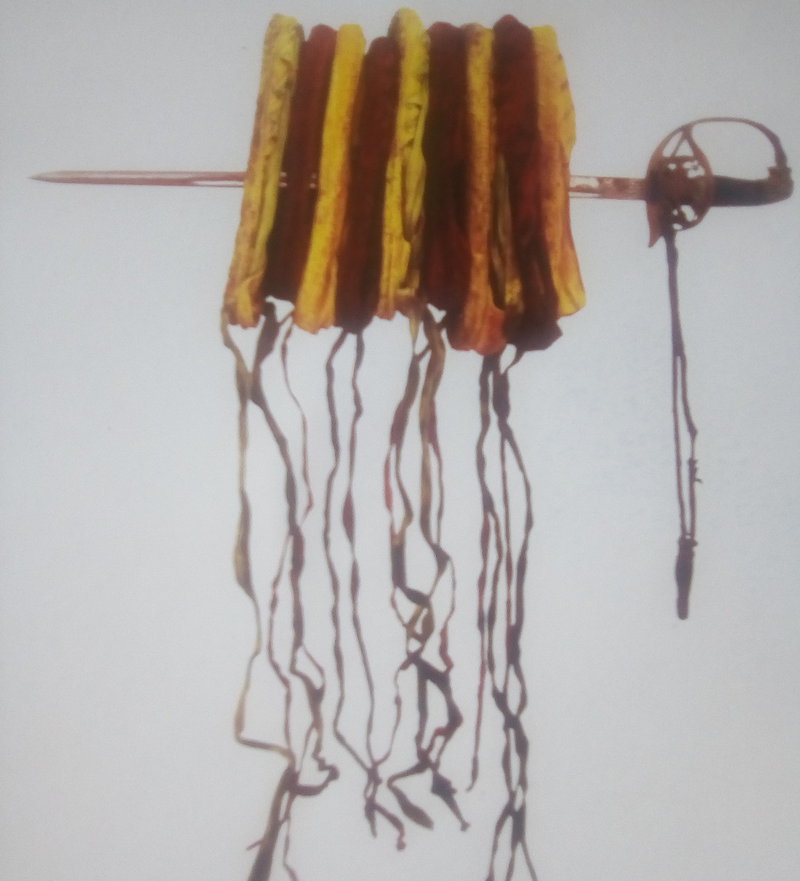POST-sentence
If art is to be meaningful it has to say something significant from the private or public world; one artist who does this is Barcelona’s Xavier G-Solis.
Having seen some publicity for his upcoming exhibitions in Barcelona and Vilafranca del Penedes, it’s clear to me that in his work he’s skillfully combining profound statements with more intimate acts of expression. In other words (like me), he sees the role of an artist as being someone who communicates in images where words alone don’t do the required job.
What appeals to me most about his creations is the pro-democracy and anti-authoritarian symbols in the exhibition, which has a title that is a play on words of “state”. Or maybe it’s more accurate to also say “State”.
In a piece that could be controversial to some, he uses shoes – his most popular item of choice over his career – in this case alternating red and yellow espadrilles previously worn by dancers at the Festa Major de Vilafranca.
These traditional Catalan shoes are shown with a military-style sword skewering through them. Their hanging down laces suggested running blood and puss to me. The work is entitled “February 12, 2019”, the date when the pro-independence political prisoners’ trial began.
This is what has been termed as a post-sentence installation, arranged alongside some engravings made with an open-casting machine on bare ground: a brutal and forceful technique that the artist hadn’t used since 2012, when the outraged “Indignats’’ occupied the Catalan capital’s most well known public square (as well as Xavier’s attention.)
Next to this are two pieces entitled “Europe”, including a bank safe that has a combination number lock forgotten years ago. Who knows what’s inside. As well as the promise that visitors are going to have the opportunity to manipulate one of the exhibits, the artist has also been scheduled to do some kind of performance in the gallery.
G-Solis, a former lecturer in philosophy, told me: “If you want to understand my work, you may have to start by thinking about the history of the human, the history of the power of man and how it began with the technique of making fire and continued with the gesture of getting on top of the world and other humans: the powerful high classes began to wear skins under the feet or some kind of sandals for ceremonies. Finally, footwear was globalised as a sign of socialisation: repression, distance, simulation, psychological protection, ostentation. All characteristic of the worst kinds of power.”
And that is exactly what I personally want from art, in any of its forms: substance.
We are living in an age where, sadly, the written word is carrying less weight as an important way to influence minds and actions. Increasingly, visual artistic expression is the preferred means for a younger public to get their ideas, and in the case of video, also their information and inspiration.
In private art galleries in Catalonia, there are still legal ways to make our chosen points. If that becomes dangerous or impossible in this European country, then we are no longer living in a place that can claim to be a democracy.

